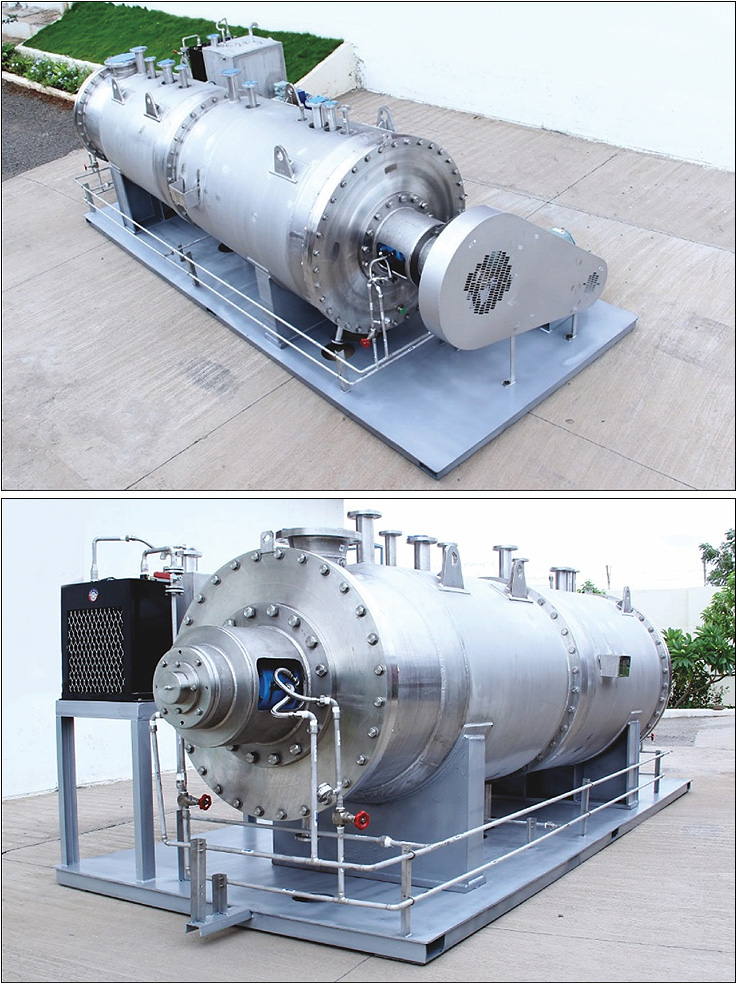EVAPORATORS & Dryers
In the evaporation process, concentration of a product is accomplished by boiling out a solvent, generally water. The recovered end product should have optimum solids content consistent with desired product quality and operating economics
It is a unit operation that is used extensively in processing foods, chemicals, pharmaceuticals, fruit juices, dairy products, paper and pulp, and both malt and grain beverages. Also it is a unit operation which, with the possible exception of distillation, is the most energy intensive.
Our technology is supported by several test and development facilities, where the technology is being continually refined, improved, and applied to new products.
Vertical shell-and-tube heat exchanger, with laterally or concentrically arranged centrifugal separator. 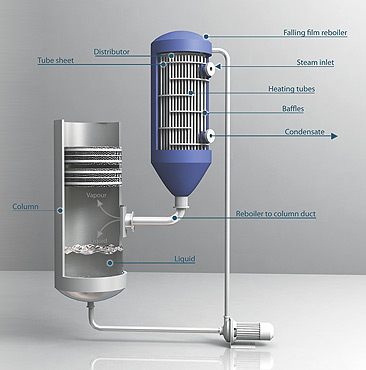 Key Characteristics: Key Characteristics:
- Best product quality – due to gentle evaporation, mostly under vacuum and extremely short residence times in the evaporator.
- High energy efficiency – due to multiple-effect arrangement or heating by thermal or
mechanical vapour recompressor, based upon the lowest theoretical temperature difference.
- Simple process control and automation – due to their small liquid content falling film
evaporators react quickly to changes in energy supply, vacuum, feed quantities,
concentrations, etc. This is an important prerequisite for a uniform final concentrate.
- Flexible operation – quick start-up and easy switchover from operation to cleaning,
uncomplicated changes of product.
Application:
- Capacity ranges of up to 150 t/hr, relatively small floor space requirement. Particularly suited for temperature-sensitive products.
|
The forced circulation evaporator was developed for processing liquors which are susceptible to scaling or crystallizing. 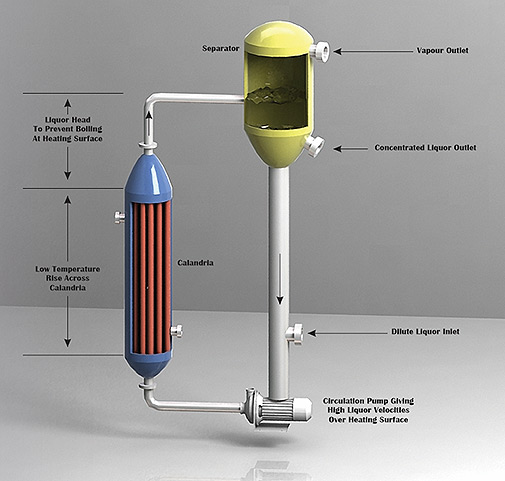 Application: Application:
- Concentration of inversely soluble materials, crystallizing duties, and in the concentration of thermally degradable materials which result in the deposition of solids.
- These high recirculation rates result in high liquor velocities through the tube which help to minimize the build up of deposits or crystals along the heating surface.
- Forced circulation evaporators normally are more expensive than film evaporators because of the need for large bore circulating pipework and large recirculating pumps. Operating costs of such a unit also are considerably higher.
|
A multiple-effect evaporator is an equipment system for efficiently using the heat from steam to evaporate water.
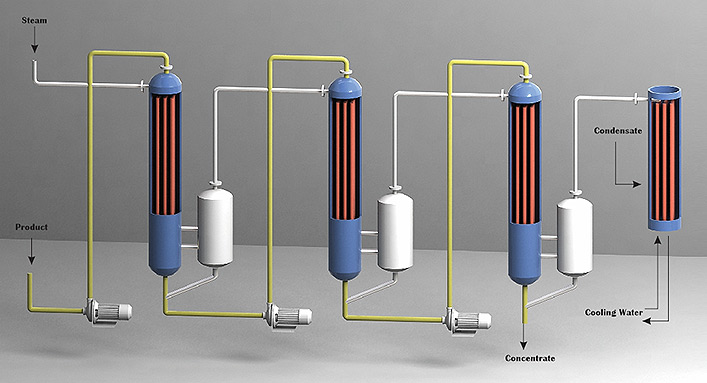
Application:
- Sodium hydroxide
- Concentration of sugar solutions to extremely high solids content
- In one case a solids concentration of 98% was achieved
- Removal of water from soaps
- Finishing concentrator on certain fruit purees such as banana and apple
- Concentration of high solids corn syrups
- Removal of solvents from vegetable oils
- Concentration of fabric softeners
- Lignin solutions
- High concentration gelatine
- High concentration chicken broth
|
The wiped or agitated thin film evaporators are used to the concentration of very viscous materials and the stripping of solvents down to very low levels.
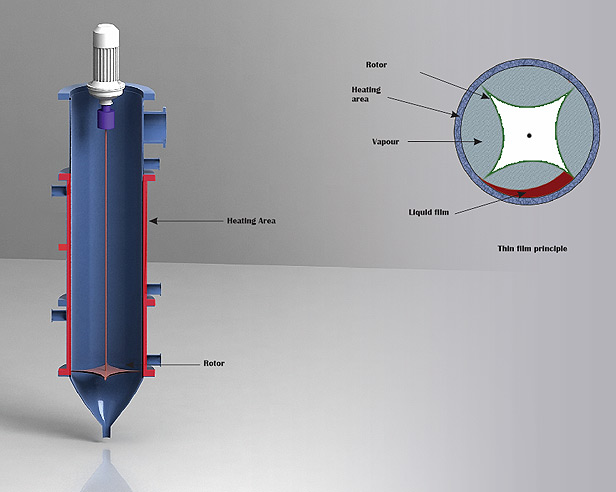
Application:
- Concentration of viscous fluids
- Pure distillation of high boiling liquids
- Heating or cooling of highly viscose media
- Degassing, removal of volatile component from highly viscous products, melts and pastes.
|
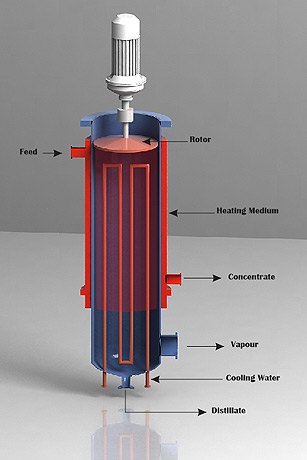 Short path evaporators offer excellent results with evaporation, concentration, distillation or degassing of high-boiling, temperature-sensitive products. Short path evaporators offer excellent results with evaporation, concentration, distillation or degassing of high-boiling, temperature-sensitive products.
Application:
- Butene-1
- Caprolactam
- Epichlorohydrine
- Glycols
- Latex
- Maleic acid
- Maleic anhydride
- Polyacrylonitrile
- Styrene monomers
- Silicone oils
|
Horizontal Thin Film Dryer (HTFD)
- Reverse Tapered Shell produces back pressure to insure retention and stability of the liquid film.
- Adjustable Film Thickness
- Wide range of viscosities
- Process Flexibility
- Rugged Construction
- Can be manufactured up to 12 m2 area
